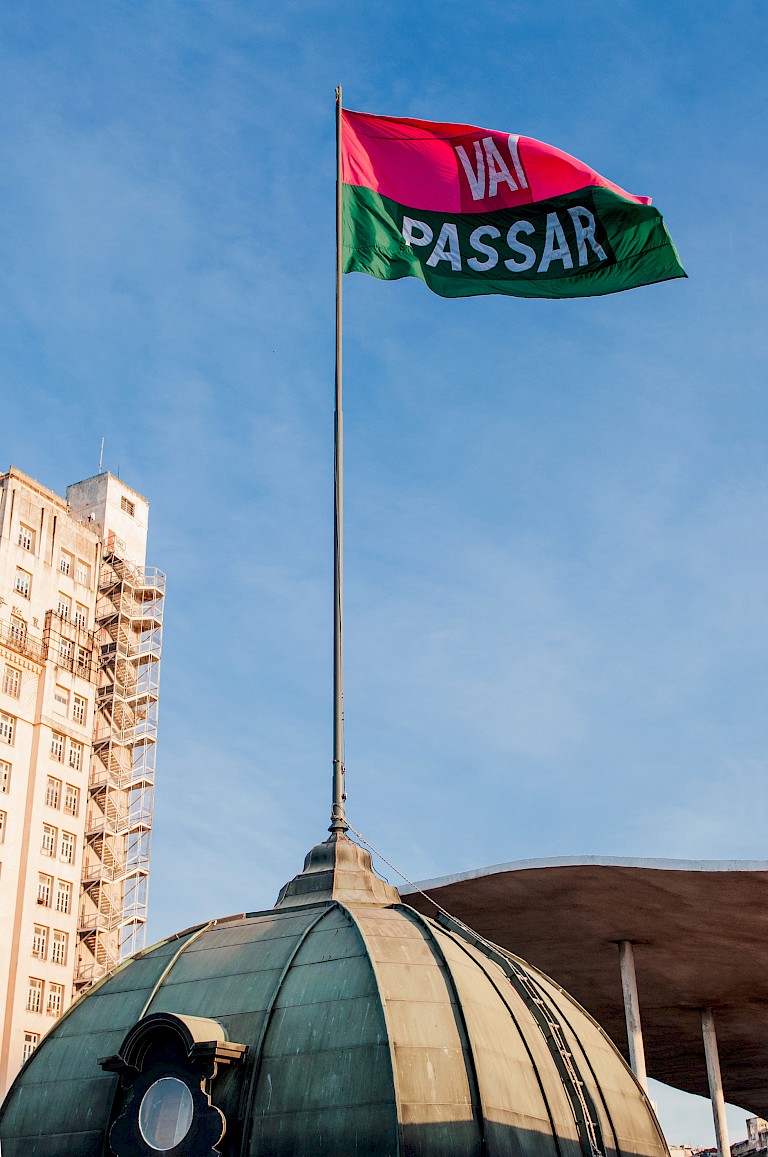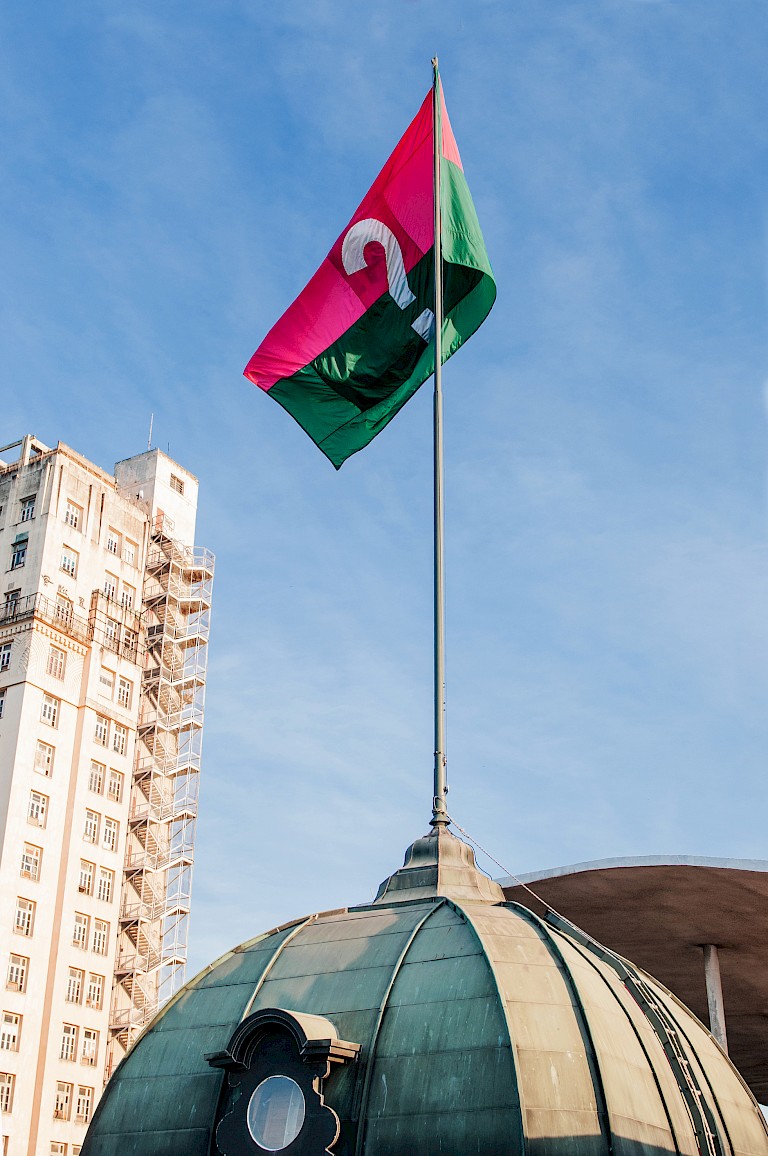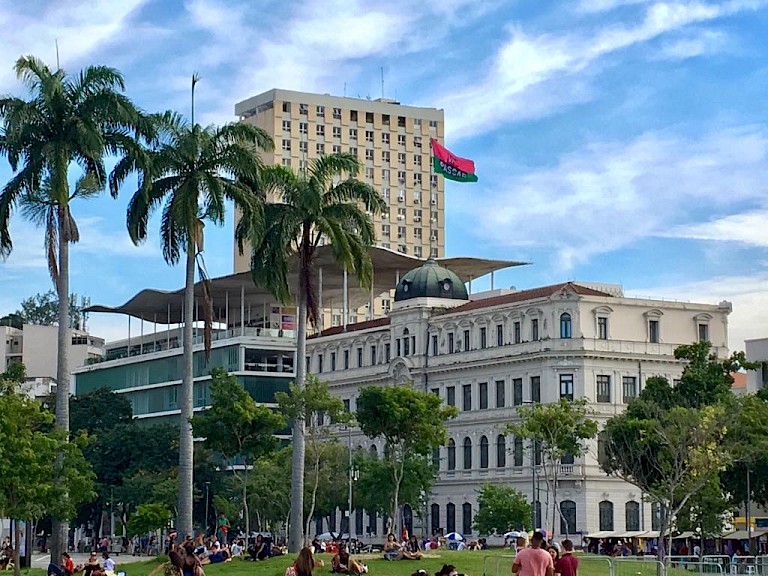



The flag was met with resounding approval from the public in Rio who felt great empathy with what the flag was asking. Creating a sense of shared common endurance by promising that this too shall pass it additionally provided a call to action. By inviting people to question when will this pass, people were pushed to take an active role in changing the status quo.
The context responsiveness of the flag was made possible by Chaves’ intimate knowledge of Rio and its internal culture and politics. An acute awareness of what was being felt by the public both with regards to the political assassination and the assumption of the new president came together to produce a work that artfully reflected both.
The employment of the school of samba colors and the reference to their music composed that year was a calculated risk based on the knowledge of the frequent success of samba schools and their subtle political undertones.
The location of the flag, atop the MAR which is located in a newly renovated part of Rio, enabled it to be received by a great many people. Located in a busy square in the heart of the downtown, thousands of passersby came in contact with this public piece. These thousands were especially profound when they were in the form of protests and demonstrations which often took place in that square.
The flag as a backdrop to such actions is a beautiful and powerful gesture of unity in the face of oppression and resilience in the face of unending struggle.




